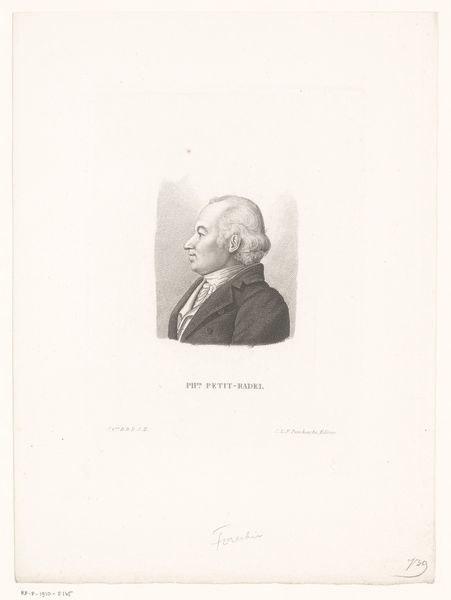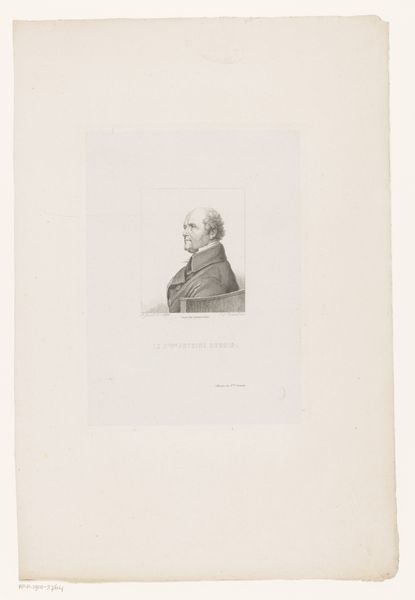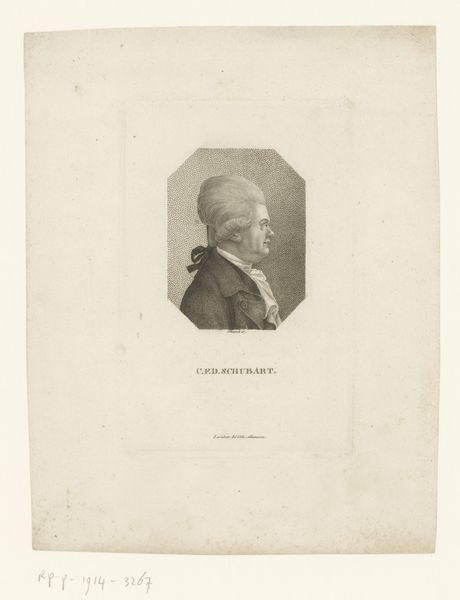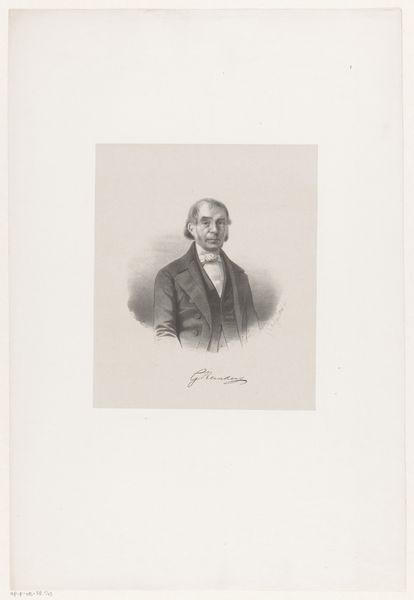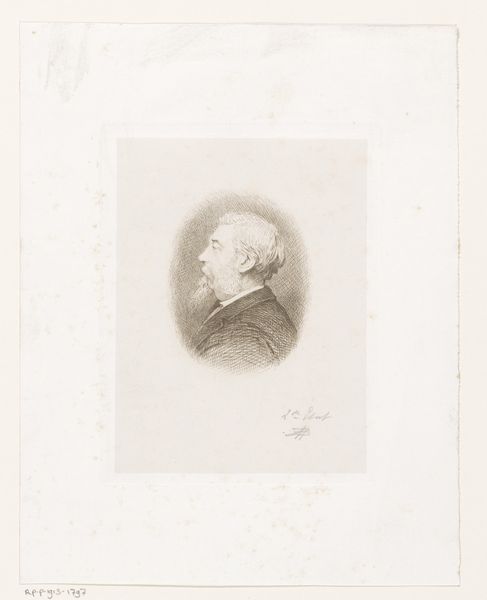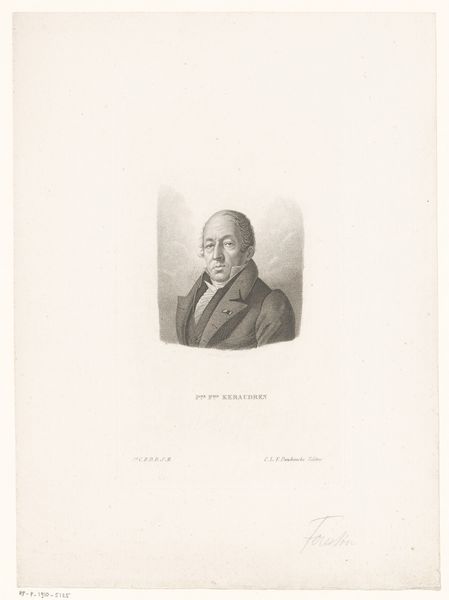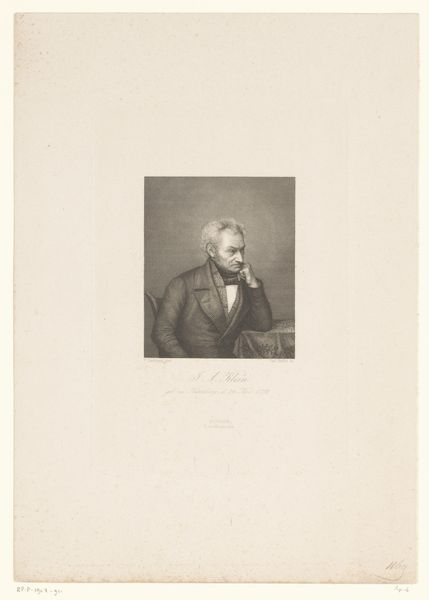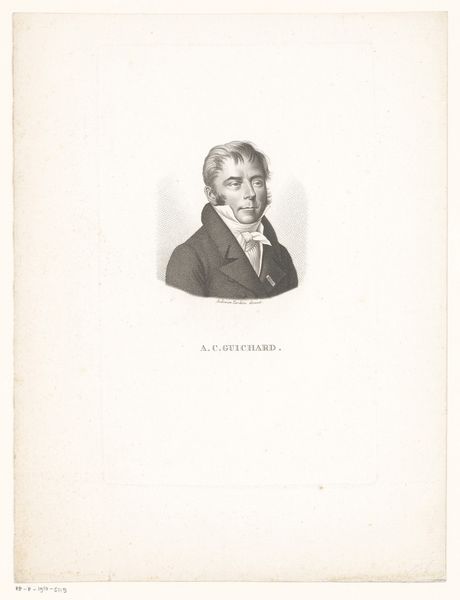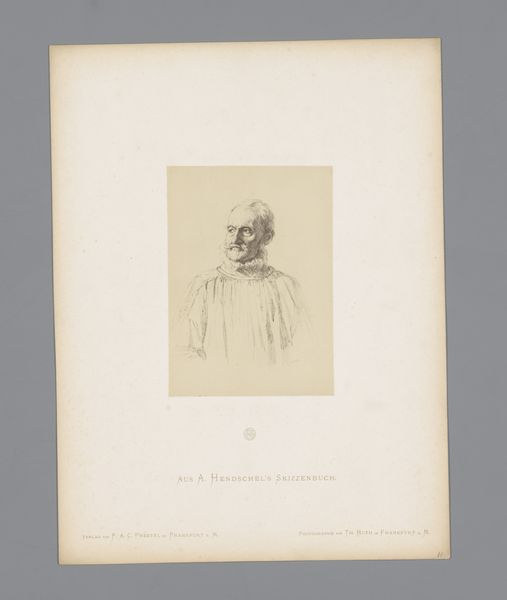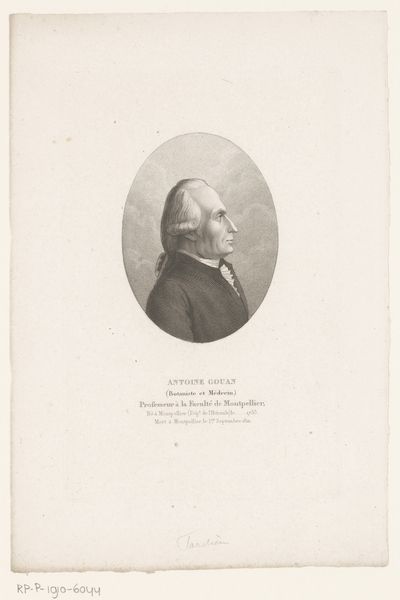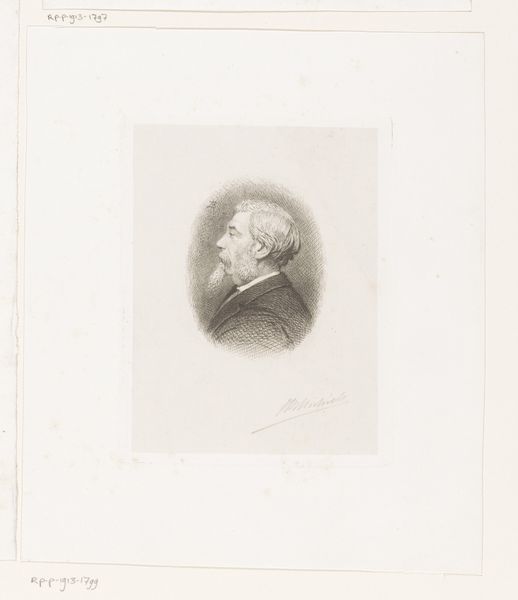
print, engraving
#
portrait
#
neoclacissism
# print
#
academic-art
#
engraving
Dimensions: height 201 mm, width 134 mm
Copyright: Rijks Museum: Open Domain
Curator: Well, I find it immediately appealing—it’s crisp and economical in its lines. There’s a remarkable control to the shading. Editor: Agreed. The piece is an engraving titled "Portret van Jean François Coste," created sometime between 1818 and 1832, by Charles Aimé Forestier. Considering its history, these prints were intended for wider distribution, aiming to familiarize the public with notable figures like Jean François Coste. Curator: Right, portraiture served a critical function, especially for figures associated with Napoleon’s rise and fall, and afterward. Coste himself was a physician and military man during the Napoleonic era; this print would cement his status, no? I see that academic tradition reflected in the idealization and how the figure is placed prominently against this stark white backdrop. Editor: Indeed. But look at how the starkness isn't entirely devoid of detail; Forestier masterfully utilizes light and shadow to give depth to Coste’s features, and note the contrast. The composition is strategic, inviting a focused gaze without being overwhelming. What do you read into Coste's posture and gaze? He's composed, but thoughtful... Curator: I'd argue the portrait style emphasizes not merely the man, but the role. Neoclassical art valued restraint and public virtue, so this subdued rendering reinforces an image of professional competency. There’s an emphasis on reasoned character. It reinforces the kind of person deemed beneficial to society in the period after turmoil in French political life. It isn’t really just Coste—it’s an ideal. Editor: The deliberate placement emphasizes those ideals rather elegantly. But that profile, almost a cameo. It’s restrained to communicate power and intellectual capacity effectively. In some sense, an almost coolly intellectual style adds power to the work. It emphasizes certain key shapes. Curator: True enough; together these elements invite us to see this portrait not just as a depiction, but an instrument of civic rhetoric, aimed to endorse specific models for political engagement. A great deal of artistic consideration given to presenting this man in a certain light. Editor: I think the power comes from its elegance, yes, and your final words make sense to me—but my initial viewing was also, strangely, very emotional, and that remains for me still. There's power and thought brought together to reflect Jean Coste to society.
Comments
No comments
Be the first to comment and join the conversation on the ultimate creative platform.
